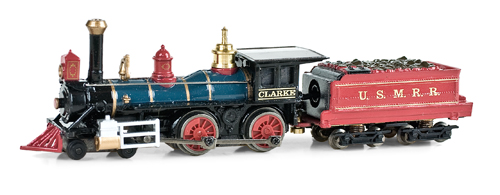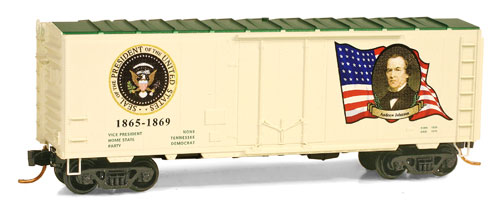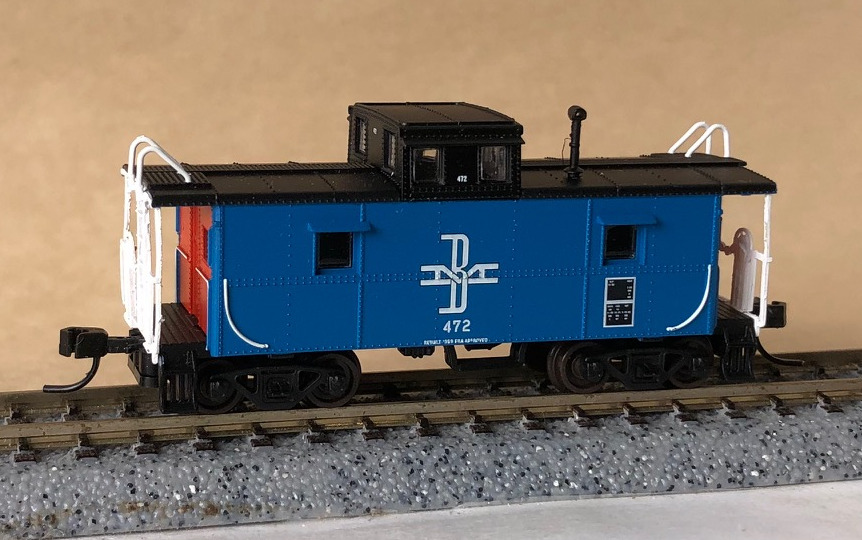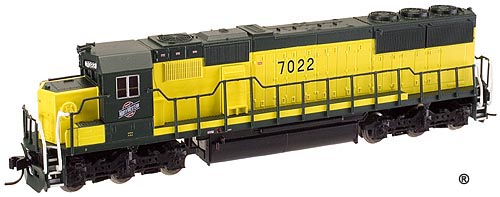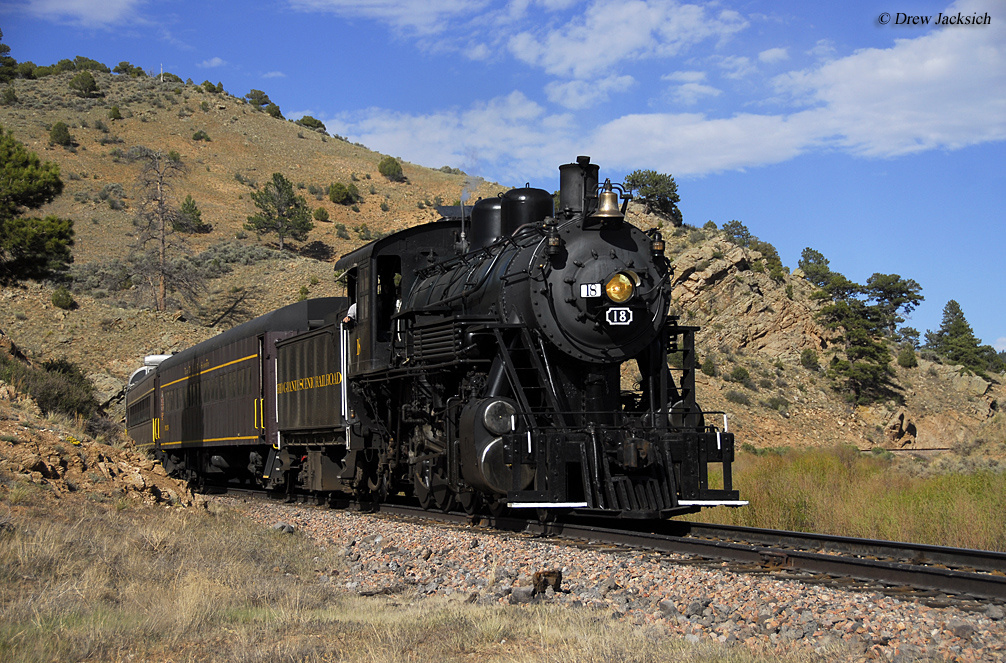Model Information: MDC/Roundhouse first released this model in 2001. Later, when MDC was bought out by Horizon Hobby, they were re-released under the Athearn label.
The Athearn release was redesigned to eliminate the need for wires between the trucks and the tender (which was imported from the MDC 2-6-0). The early MDC releases come with non-functioning knuckle coupler mounted on the pilot and the ubquitous Rapido coupler in the rear. Later MDC releases sported a new dummy pilot with a pocket that can be used to mount whatever kind of coupler you want. The Athearn releases carry Accumate couplers at both ends.
The Athearn release was redesigned to eliminate the need for wires between the trucks and the tender (which was imported from the MDC 2-6-0). The early MDC releases come with non-functioning knuckle coupler mounted on the pilot and the ubquitous Rapido coupler in the rear. Later MDC releases sported a new dummy pilot with a pocket that can be used to mount whatever kind of coupler you want. The Athearn releases carry Accumate couplers at both ends.
Prototype History: Under the Whyte notation for the classification of steam locomotives, 2-8-0 represents the wheel arrangement of two leading wheels on one axle, usually in a leading truck, eight powered and coupled driving wheels on four axles and no trailing wheels. In the United States and elsewhere, this wheel arrangement is commonly known as a Consolidation.
Of all the locomotive types that were created and experimented with in the 19th century, the 2-8-0 was a relative latecomer. From its introduction in 1866 and well into the early 20th century, the 2-8-0 design was considered to be the ultimate heavy-freight locomotive. The 2-8-0's forte was starting and moving "impressive loads at unimpressive speeds" and its versatility gave the type its longevity. The practical limit of the design was reached in 1915, when it was realized that no further development was possible with a locomotive of this wheel arrangement.
From Wikipedia
Of all the locomotive types that were created and experimented with in the 19th century, the 2-8-0 was a relative latecomer. From its introduction in 1866 and well into the early 20th century, the 2-8-0 design was considered to be the ultimate heavy-freight locomotive. The 2-8-0's forte was starting and moving "impressive loads at unimpressive speeds" and its versatility gave the type its longevity. The practical limit of the design was reached in 1915, when it was realized that no further development was possible with a locomotive of this wheel arrangement.
From Wikipedia
Brand/Importer Information:  MDC Roundhouse was founded in California in 1938 and relocated in 1993 to Carson City, Nevada due to statewide restrictions on painting. MDC Roundhouse was a producer of both RTR (Ready-to-Run) and kit versions of N Scale rolling stock as well as RTR locomotives. They entered the N scale market in 1979 with a Thrall Hi-Side Gondola and a Hi-Cube Single Door Box Car. MDC Roundhouse was purchased by Horizon Hobbies in June of 2004, when its owner since 1938 C. H. Menteer retired, and merged into their Athearn line.
MDC Roundhouse was founded in California in 1938 and relocated in 1993 to Carson City, Nevada due to statewide restrictions on painting. MDC Roundhouse was a producer of both RTR (Ready-to-Run) and kit versions of N Scale rolling stock as well as RTR locomotives. They entered the N scale market in 1979 with a Thrall Hi-Side Gondola and a Hi-Cube Single Door Box Car. MDC Roundhouse was purchased by Horizon Hobbies in June of 2004, when its owner since 1938 C. H. Menteer retired, and merged into their Athearn line.
Unlike many of their contemporaries which contracted with European firms to produce their products, MDC made their own toolings. They made several popular body styles and produced them for road names that many other vendors (even Micro-Trains) wouldn't touch. This made them popular with modelers. Also, their un-assembled "kits" permitted a lower price point so they were popular with "runners" as well as "modelers".
Of particular interest was the attention given to modern 50 foot steel boxcars. They made some attempt to accurately mold the differences into distinct models to represent each of the major prototype manufacturers products. They have distinct toolings not only for the different products from FMC, BFF and PS, but also multiple models for each of these manufacturers including "standard" vs "Youngstown" doors and "waffle" vs. "rib" sides. In total they produced 13 different versions of the 50 foot steel boxcar.

Unlike many of their contemporaries which contracted with European firms to produce their products, MDC made their own toolings. They made several popular body styles and produced them for road names that many other vendors (even Micro-Trains) wouldn't touch. This made them popular with modelers. Also, their un-assembled "kits" permitted a lower price point so they were popular with "runners" as well as "modelers".
Of particular interest was the attention given to modern 50 foot steel boxcars. They made some attempt to accurately mold the differences into distinct models to represent each of the major prototype manufacturers products. They have distinct toolings not only for the different products from FMC, BFF and PS, but also multiple models for each of these manufacturers including "standard" vs "Youngstown" doors and "waffle" vs. "rib" sides. In total they produced 13 different versions of the 50 foot steel boxcar.
Item created by: gdm on 2016-12-02 14:37:33. Last edited by gdm on 2021-01-16 07:51:26
If you see errors or missing data in this entry, please feel free to log in and edit it. Anyone with a Gmail account can log in instantly.
If you see errors or missing data in this entry, please feel free to log in and edit it. Anyone with a Gmail account can log in instantly.




